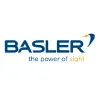Asia-Pacific Fitness Equipment Market is expected to reach USD 5,154.34 million by 2025 from USD 3,096.59 million in 2017, at a CAGR of 6.7% in the forecast period 2018 to 2025. The new market report contains data for historic years 2016, the base year of calculation is 2017 and the forecast period is 2018 to 2025. Access Complete Report: https://www.databridgemarketresearch.com/reports/apac-fitness-equipment-market
Access Complete Report: https://www.databridgemarketresearch.com/reports/apac-fitness-equipment-market
Segmentation: Asia-Pacific Fitness Equipment Market
Asia-Pacific Fitness Equipment Market By Type (Cardiovascular Training Equipment{Treadmills, Elliptical Trainers, Stationery Cycles, Stair Steppers, Rowing Machines, Others} Strength Training Equipment{ Single Stations, Multistations, Benches & Racks, Free Weights, Plate Loaded Equipment, Accessories}, Fitness Monitoring Equipment, Body Composition Analyzers{Bioimpedance Analyzer, Dual Emission X-Ray Absorptiometry (DEXA), Skinfold Caliper, Hydrostatic Weighing, Air Displacement Pelthysmography}), By End-Users (Health Clubs/Gym, Home Settings, Corporate Settings, Hotels, Apartments, Hospitals, Clinics)
Drivers: Asia-Pacific Fitness Equipment Market
The major factors contributing to the growth of the market includes factors such as rising incidences of the chronic diseases, and increasing health insurance. RISING INCIDENCES OF THE CHRONIC DISEASES: The prevalence of chronic diseases such as obesity, cardiovascular disease (CVD), diabetes and many others has increased considerably over a period of time. The chronic diseases are the major killer at this particular time. Physical inactivity is considered as one the major cause of chronic diseases. According to National Centre for Biotechnology Information, it has been estimated that physical activity/exercise is examined as primary prevention against 35 chronic conditions such as, accelerated biological aging/premature death, low cardiorespiratory fitness (VO2max), sarcopenia, metabolic syndrome, obesity, insulin resistance, prediabetes, diabetes, non-alcoholic fatty liver disease, coronary heart disease, peripheral artery disease, hypertension, stroke, congestive heart failure, endothelial dysfunction, arterial dyslipidaemia, haemostasis, deep vein thrombosis, cognitive dysfunction, depression and anxiety, osteoporosis, osteoarthritis, balance, bone fracture/falls, rheumatoid arthritis, colon cancer, breast cancer, endometrial cancer, gestational diabetes, preeclampsia, polycystic ovary syndrome, erectile dysfunction, pain, diverticulitis, constipation, and gallbladder diseases. According to National Centre for Biotechnology Information, in 2016, it has been estimated that chronic diseases such as heart disease, cancer, and diabetes are the leading causes of death and disability in the United States. Chronic diseases account for 70.0% of all deaths in the U.S., which is 1.7 million each year. Various exercises have been suggested for different diseases for instance, According to The American Diabetes Association, it has been estimated that at least 150 minutes a week of moderate-intensity aerobic physical activity at 50.0 % to 70.0 % of maximum heart rate and at least 90 minutes a week of vigorous aerobic exercise at 70.0% of maximum heart rate. With the increasing prevalence of chronic diseases the demand for fitness to remain healthy is also increasing. People are getting more health conscious. This growing demand has provided an opportunity for the fitness equipment companies to focus on introducing various products in the market in order to meet the rising demand. Due to this rising demand the companies are focusing on developing equipment which is contributing to the demand for fitness equipment market. INCREASING HEALTH INSURANCE: Making exercise equipment accessible for the use of clients engages a variety of responsibilities. There are benefits and risks associated with the use of all equipment which includes weight machines, treadmills, exercise balls, elliptical machines, stationary bicycles, free weights, balance beams and more. There is a vast difference between the workout gears which are supposed to be used at home and those which are designed only for a gym or other workout facility. In Asia-Pacific there are approximate 7,000 privately owned fitness centers most of which includes the small non-franchised operations. Gyms, fitness centers and health clubs are focused on keeping people strong and healthy. It is very common that when a person is involved in any intense physical activity, it can sometimes cause a person injured while using the equipment or while training with the trainer. All these incidents can put you under liability claims and lawsuits which can be avoided with the gym insurance policy to protect the facility. Gym insurance is a unique combination of insurance coverages that includes gyms, fitness centers, or health clubs. The specific coverage types and amounts needed for a facility depends on factors such as the size of the facility, the services offered, and the number of employees. All these insurance coverage in Asia-Pacific for the fitness are contributing to the growth of the Asia-Pacific fitness equipment market.
Major Players: Asia-Pacific Fitness Equipment Market
Some of the Major Players Operating in this Market are:-
- Brunswick Corporation,
- Technogym S.p.A.,
- Johnson Health Tech. Co. Ltd.,
- Precor Incorporated among others.










